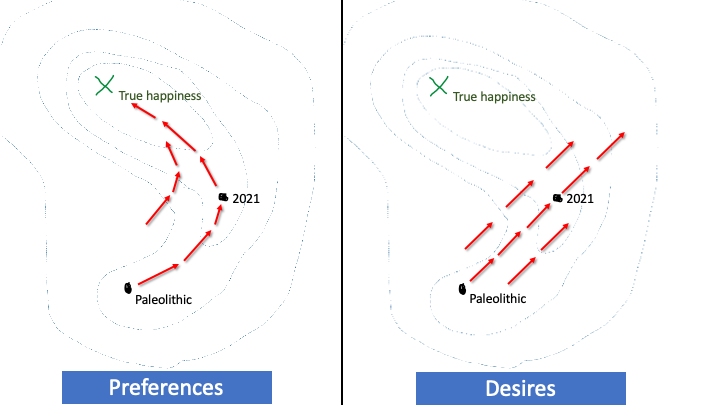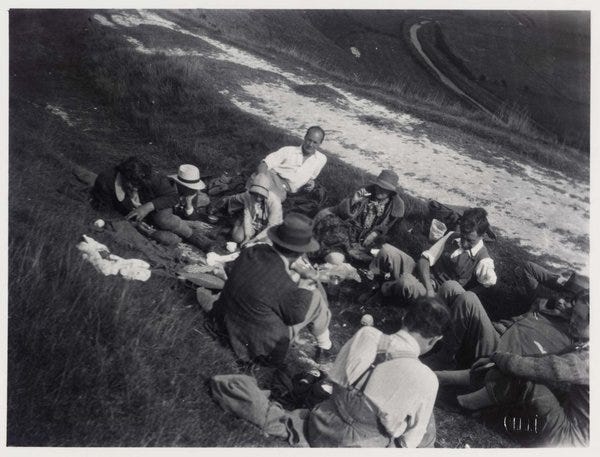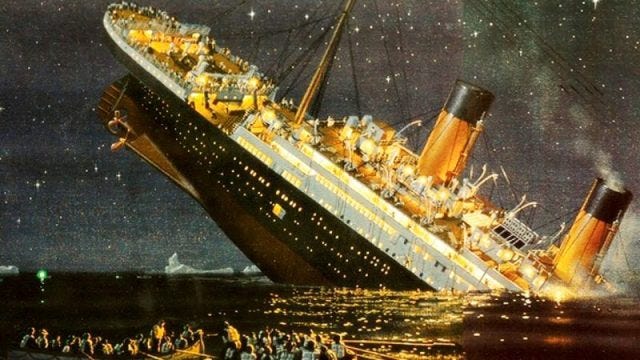How's it going with the Universal Cultural Takeover? Part II
post by David Hugh-Jones (david-hugh-jones) · 2021-09-24T09:37:41.287Z · LW · GW · 1 commentsThis is a link post for https://wyclif.substack.com/p/hows-it-going-with-the-universal-601
Contents
Preferences and desires Gin Lane to Bloomsbury We’re on a boat None 1 comment
This is the second half of a response to an old blog post by Scott Alexander. Part I is here [LW · GW].
Preferences and desires
Universal culture as a summoner-eating demon is a fabulous metaphor, but not an entirely new idea. Hmm:
The bourgeoisie cannot exist without constantly revolutionising the instruments of production, and thereby the relations of production, and with them the whole relations of society…. All fixed, fast-frozen relations, with their train of ancient and venerable prejudices and opinions, are swept away, all new-formed ones become antiquated before they can ossify. All that is solid melts into air….
As the Coke example suggests, a lot of “universal culture” is really just “capitalist processes and products”, which indeed are selected to outcompete others by the rigour of the market. Alexander again:
Universal culture is the collection of the most competitive ideas and products. Coca-Cola spreads because it tastes better than whatever people were drinking before.
Economists have a way of thinking about this, which has become so influential that, like spectacles we’ve forgotten we are wearing, it is almost invisible. Competition means competition to satisfy preferences, and preference satisfaction is good because of “consumer sovereignty” — the basic liberal idea that only I can decide what is good for me. The modern idea of preferences is basic to a large amount of powerful microeconomic theory which can be very good at explaining the world. But you can think that, and still think that the idea itself is wrong.
An alternative view is that capitalist products exist, directly or indirectly, to satisfy desires, not preferences. Preferences are choices made by the sovereign consumer. Desires are the basic human drives that we are born with.
A picture may help.

The picture shows human society as a complex multidimensional landscape. The contour lines are human happiness. The higher up we are, the better our life is. We start off as cavepeople in the paleolithic, not very high up because we are hungry and may be eaten by lions. Then, skipping some trivial details like the Bronze age, Iron age, medieval Europe and early modernity, capitalism gets going.
The view on the left panel is the Preferences view. Capitalism satisfies our preferences, which are always to move up the happiness gradient, with the red arrows. We can’t go directly towards the best possible society, because the happiness gradient isn’t arranged that way: for instance, we had to use coal for power until solar panels were invented, and we couldn’t have invented those without the social progress based on coal. But we have progressed steadily uphill to 2021, and so long as we keep the right institutions we will get steadily better until we arrive at True Happiness. Factfulness!
The view shown in the right hand panel is that capitalism satisfies desires. Desires are baked into humans by evolution. They work well for cavepeople! You are always hungry, so you want sweet stuff. More sweet fruit would increase your well-being. When capitalism fulfils your desires, your well-being increases. At the same time, society changes. Now it is 2021 and food is available everywhere. But you still want sweet stuff! The arrows still point the same way, but they are now angled down the happiness gradient, not up. As capitalism progresses, it becomes less effective at getting to the True Happiness, er, sweet spot.
Gin Lane to Bloomsbury
This problem was not invented with behavioural economics in the 1980s. Wherever capitalism spread, it brought problems of temptation. For instance, among indigenous peoples around the world, contact with the expanding West was followed by the ravages of alcoholism. This was no different within the West itself:

Wherever development brought urbanization, a standard set of problems emerged in its wake: sex, unwanted pregnancy and STDs; drink and other drugs; violence and crime; gambling.
Western culture certainly retains things like Latin texts and Beowulf, but the culture we are heirs to was the set of solutions that enabled people to thrive in the environment of emerging capitalism. These solutions included the virtues of cooperation, foresight and self-control. They were pushed using the technology of the printing press, which opened up a fast, reliable form of cultural transmission — the written word — to a much larger public. They were packaged up in religious formats, first by the various types of Reformed Christianity, then by post-Tridentine Catholicism. The sects which transmitted these meme packages thrived, as Weber famously pointed out. They became culturally influential, even dominant. Someone, I forget who, said that in the 1830s the prototypical American businessman was a hard-bitten, hard-drinking cynic; 10 years later he was a pious, churchgoing evangelical.
At some point in the twentieth century, the package deal offered by this culture stopped being worth the cost. Blame the scientific progress that cut away at its Christian roots; new technologies of measurement, communication and control that substituted for “character” and self-control; or the vagaries of history and intellectual fashion.

All these reasons may explain why someone living in California (or London or New York) can now think of Western culture as gone to meet its ancestors, among Latin manuscripts and Thor. But you can’t blame capitalism per se, because capitalism per se also provided the conditions for Western culture’s rise.
We’re on a boat
More importantly, we shouldn’t imagine that modern capitalism has now provided a viable substitute. Markets provide for individuals’ wants. But, even disregarding what was said above about desires and preferences, markets notoriously fail in the presence of externalities. And culture is nothing but one big externality, more specifically, one huge coordination game. The language we use, the jokes we tell, the heroes we admire, the social norms we endorse, all only work because we expect others to understand them. If you leave culture to the market, you will certainly get some culture: it isn’t something that humans can avoid having. What you probably won’t get is a culture that is particularly helpful at solving your problems — including many of the same problems that we had in the 18th century:

This is more obvious in Columbus, Ohio than in London or New York or Silicon Valley. But even in those latter places it can still be true. When people in those places laugh at Leave voters or Trump voters, or when they are concerned about them, I have this image: the sloping deck of the Titanic. At the bottom, it’s chaos, people are drowning, others are struggling to get on the lifeboats. At the top are the First Class passengers. Some are still sipping cocktails. Others are more alert.

“Look at those poor fellows down there!” they say.
1 comments
Comments sorted by top scores.
comment by romeostevensit · 2021-09-25T18:00:52.467Z · LW(p) · GW(p)
One thing I've noticed is that when companies are focused on getting new customers they often improve the product in ways that make it meet the customer's needs better. This helps it attract those new customers. In contrast when companies switch to increasing the value they get from each customer they generally introduce a lot of on-their-face anti-customer quality of life things that drive up short term engagement. This may be significant part of the story of company churn. Once a company is in the 'exploit' existing customer base phase it is probably nigh impossible for them to go back and they are on a slope that will orient them increasingly towards the least discerning most easily exploited customers.